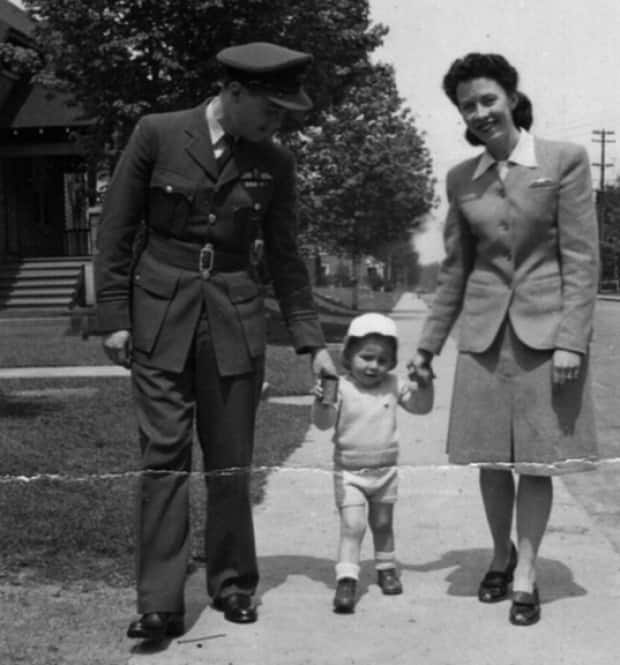Families to gather in Estevan, honour 21 RCAF airmen killed in 1946 crash

Nearly 76 years ago, 21 RCAF wartime airmen — some recommissioned — were killed in a plane crash on their way to Estevan.
On July 9, nearly 70 members of their families are expected to gather at the crash site for the unveiling of a memorial plaque for their fathers, grandfathers, great-grandfathers and siblings who died ferrying borrowed Second World War training planes back to the United States.
On Sept. 15, 1946, on their return trip to Canada, the Douglas Dakota III (DC-3) cargo plane that had taken off from Minot, N.D., crashed just outside of Estevan, killing the 21 airmen aboard. It was meant to be a 148 kilometre flight to the Estevan Air Base.
Marie Donais Calder wrote a book to honour the 20 pilots and one mechanic that were ferrying the borrowed planes back to the States.
LISTEN | Marie Donais Calder about the 21 RCAF airmen's crash and their upcoming memorial"
On their way back, they realized there had been a mistake before liftoff that would lead to the crash.
"These were extremely skilled pilots and I'm sure in their minds they thought they could do this, they could land it, but it didn't happen," Calder said.
Some families had come to Estevan looking for some sort of memorial or monument in recognition of the men, Calder said.
In 2018, a wooden monument was completed with the faces of the men carved into it.
On Saturday, a memorial created to honour those men will be unveiled at the crash site.
Ken Bouchard's father, Camille Bouchard, was among those airmen. He died only three years after Ken was born in 1943.

He said Camille wanted to be a fighter pilot but had eyesight problems and instead joined the only French-Canadian-specific bomber squadron, the Alouette.
"I remember him more from pictures and from stories," he said
"He never wanted to crash a plane, so he brought planes back from a bombing, sometimes in very, very bad shape with one or two engines out; damaged wings; damaged bodies of the plane," Ken said, recalling a letter Camille had sent home.
Ken had planned to fly from Wakefield, Que., just north of Ottawa, to Estevan for the unveiling but can't make it. Instead, his daughter, Roberta Bouchard, will take his place.
Ken said he plans to visit Estevan to see the crash site before he dies.
Calder said she has developed a deep connection with the families to the point she expects she'll have to carry an excessive amount of tissues during the memorial.
She said she plans to sing a song to the families in honour of their late relatives.
An Aviation Safety Network record said the airmen had ferried Fairchild PT-19 Cornell Planes to Fargo, N.D., and were returning to ferry another set of planes.
It said eyewitnesses saw the plane's undercarriage raised, the plane climbed sharply, stalled and then crashed. An investigation revealed that a control lock on the starboard elevator had not been removed before takeoff, leading to the crash.


